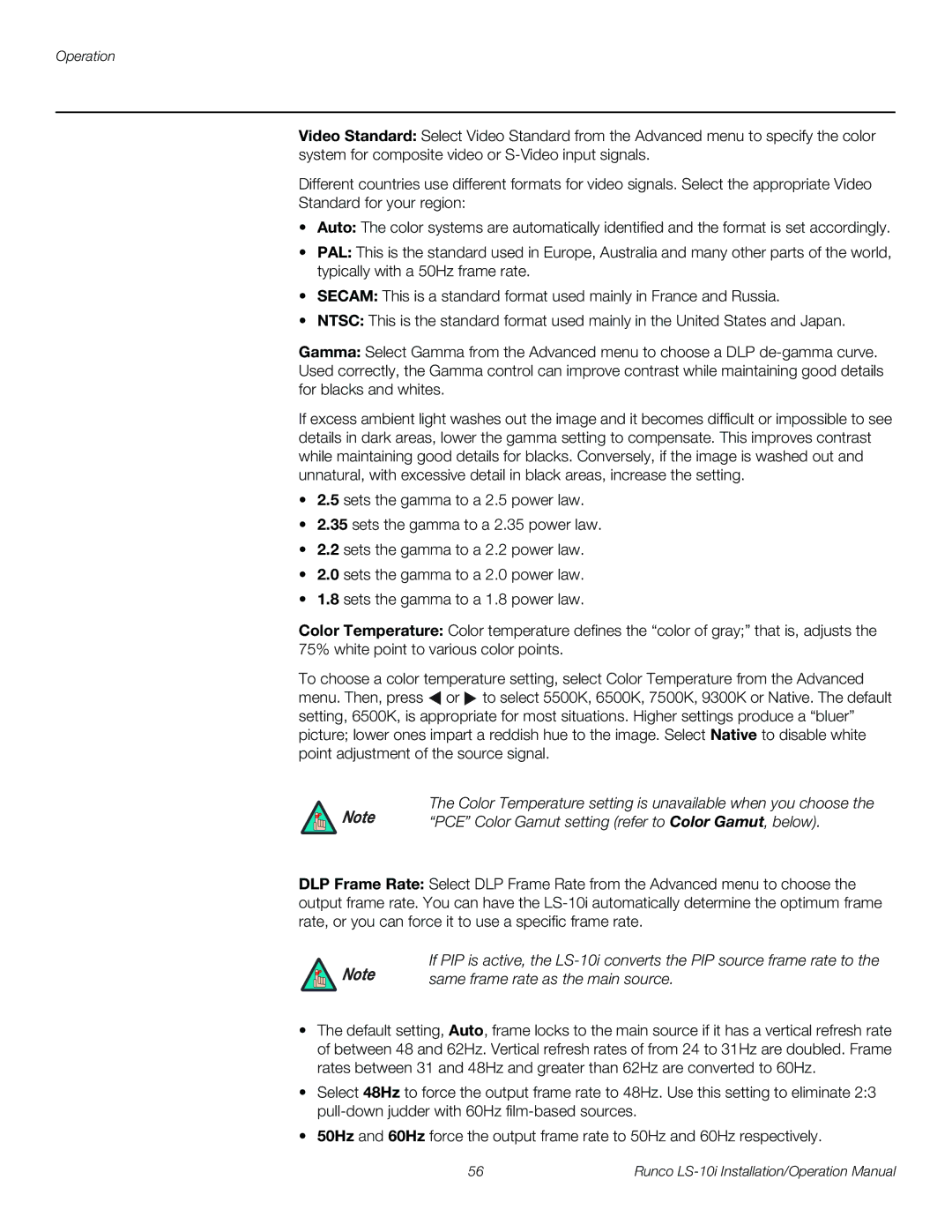
Operation
Video Standard: Select Video Standard from the Advanced menu to specify the color system for composite video or
Different countries use different formats for video signals. Select the appropriate Video
Standard for your region:
•Auto: The color systems are automatically identified and the format is set accordingly.
•PAL: This is the standard used in Europe, Australia and many other parts of the world, typically with a 50Hz frame rate.
•SECAM: This is a standard format used mainly in France and Russia.
•NTSC: This is the standard format used mainly in the United States and Japan.
Gamma: Select Gamma from the Advanced menu to choose a DLP
If excess ambient light washes out the image and it becomes difficult or impossible to see details in dark areas, lower the gamma setting to compensate. This improves contrast while maintaining good details for blacks. Conversely, if the image is washed out and unnatural, with excessive detail in black areas, increase the setting.
•2.5 sets the gamma to a 2.5 power law.
•2.35 sets the gamma to a 2.35 power law.
•2.2 sets the gamma to a 2.2 power law.
•2.0 sets the gamma to a 2.0 power law.
•1.8 sets the gamma to a 1.8 power law.
Color Temperature: Color temperature defines the “color of gray;” that is, adjusts the 75% white point to various color points.
To choose a color temperature setting, select Color Temperature from the Advanced menu. Then, press ![]() or
or ![]() to select 5500K, 6500K, 7500K, 9300K or Native. The default setting, 6500K, is appropriate for most situations. Higher settings produce a “bluer” picture; lower ones impart a reddish hue to the image. Select Native to disable white point adjustment of the source signal.
to select 5500K, 6500K, 7500K, 9300K or Native. The default setting, 6500K, is appropriate for most situations. Higher settings produce a “bluer” picture; lower ones impart a reddish hue to the image. Select Native to disable white point adjustment of the source signal.
Note | The Color Temperature setting is unavailable when you choose the |
“PCE” Color Gamut setting (refer to Color Gamut, below). |
DLP Frame Rate: Select DLP Frame Rate from the Advanced menu to choose the output frame rate. You can have the
Note | If PIP is active, the |
same frame rate as the main source. |
•The default setting, Auto, frame locks to the main source if it has a vertical refresh rate of between 48 and 62Hz. Vertical refresh rates of from 24 to 31Hz are doubled. Frame rates between 31 and 48Hz and greater than 62Hz are converted to 60Hz.
•Select 48Hz to force the output frame rate to 48Hz. Use this setting to eliminate 2:3
•50Hz and 60Hz force the output frame rate to 50Hz and 60Hz respectively.
56 | Runco |
